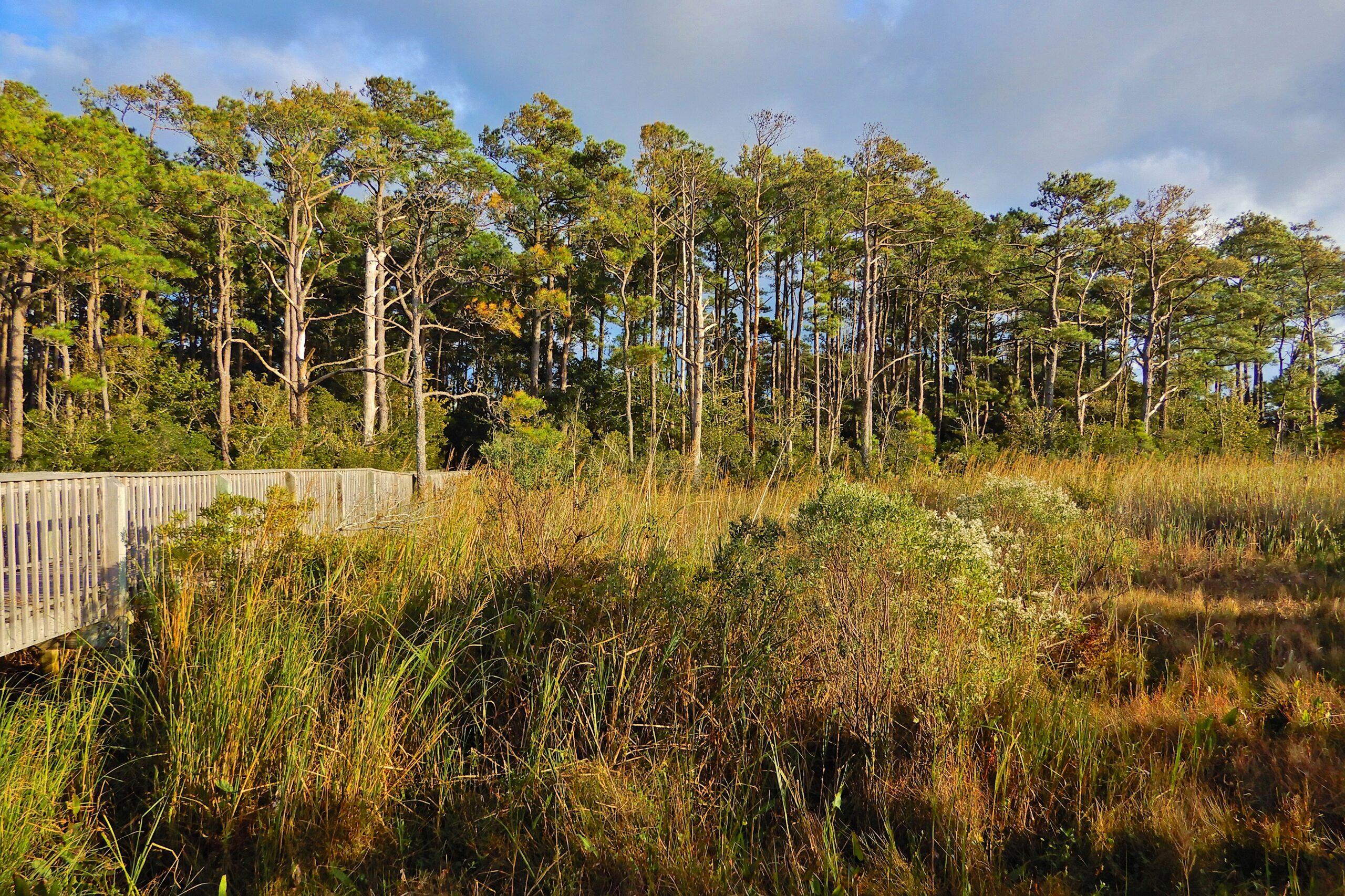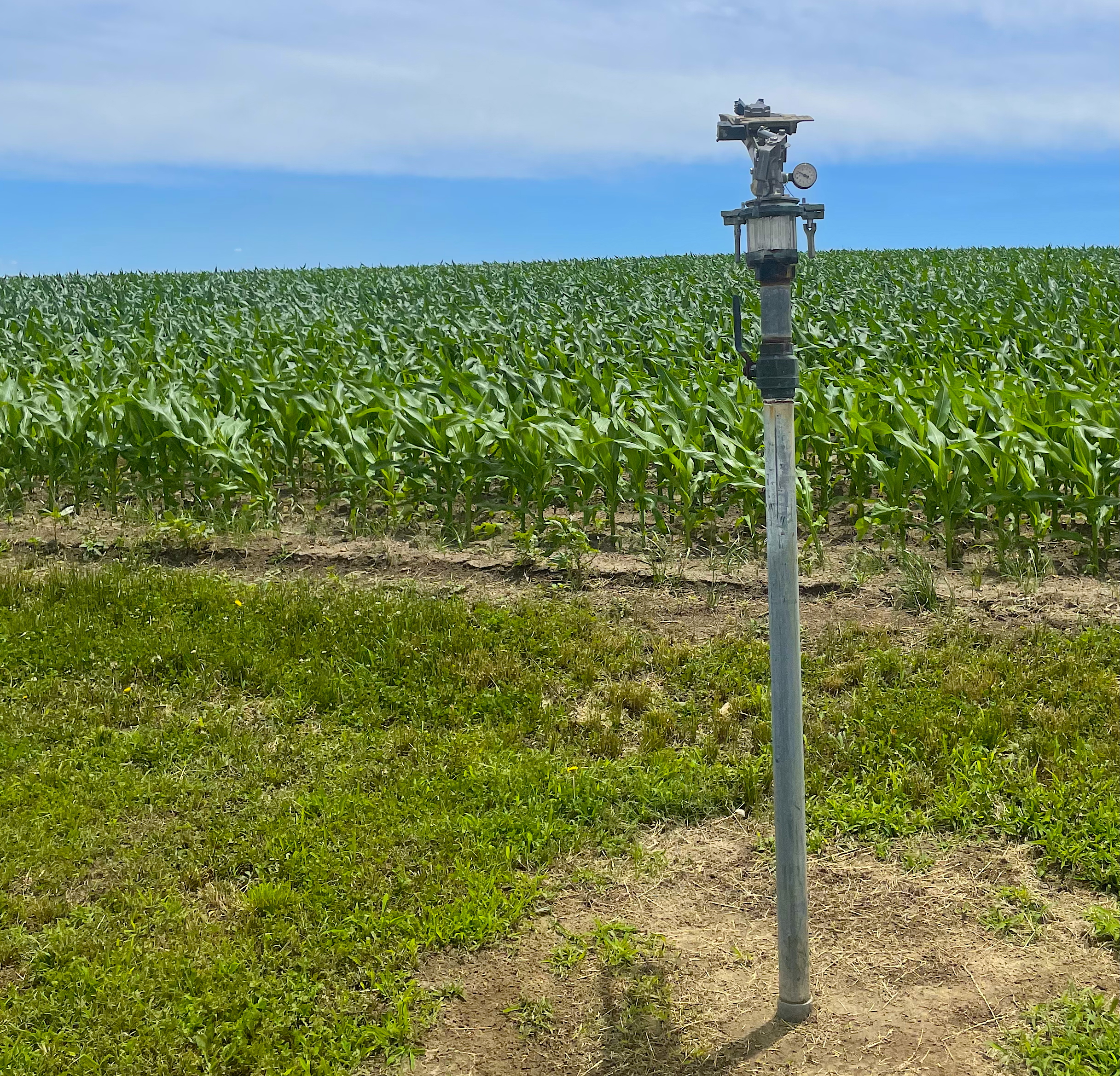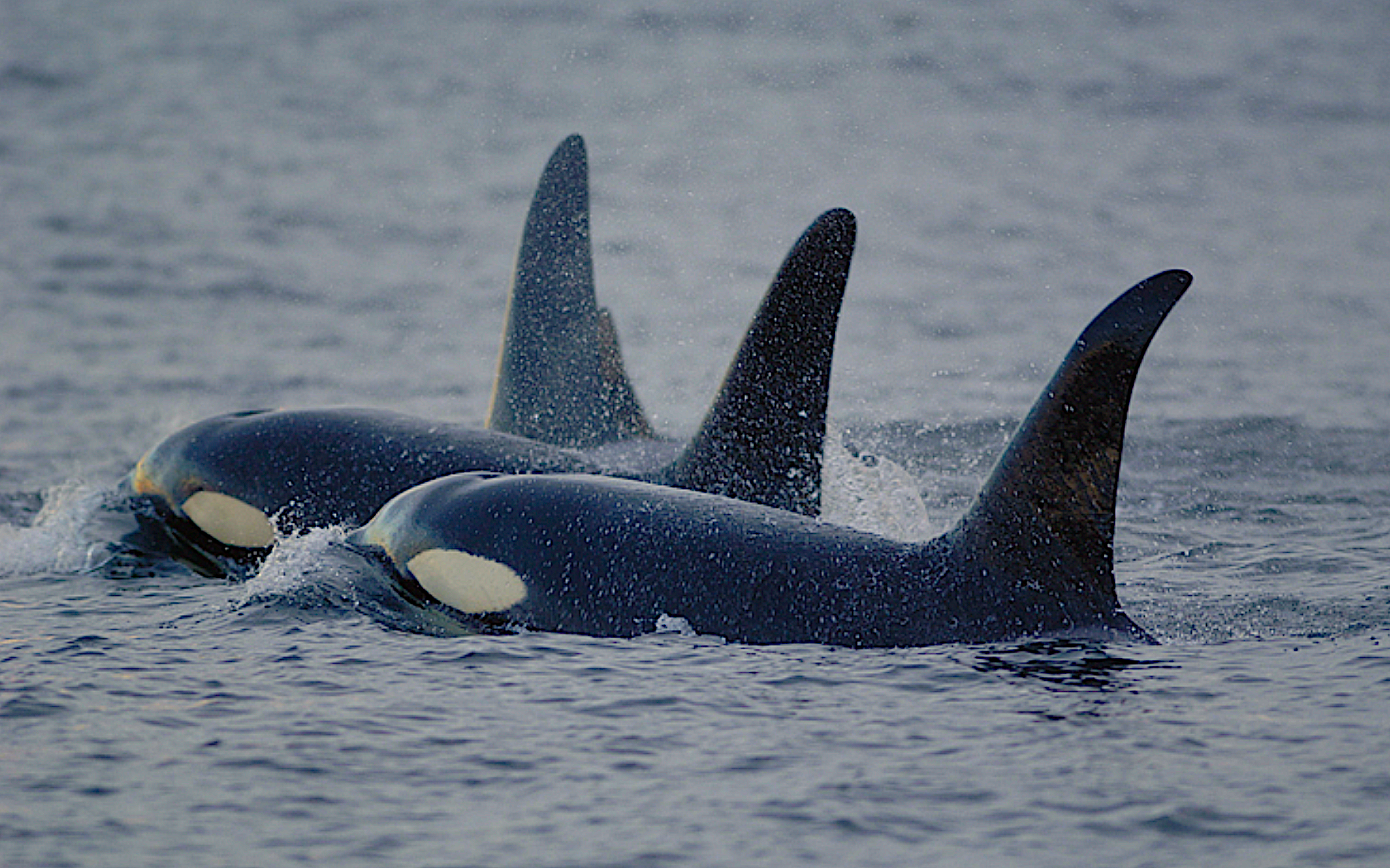Carotank…Currituck: Land of the Wild Goose

Algonquian Indians called this area “Carotank” meaning “land of the wild goose.” Today, it is known as Currituck.
The area remains synonymous with waterfowling in more than name alone. Situated on the Atlantic Flyway, Currituck Sound is an ideal stopover for migrating ducks, geese and swans.
Currituck Heritage Park, located on B.C. Knight’s former hunt club property, encapsulates the fabled waterfowling tradition and rich natural resources of Currituck Banks. The park — which includes the historic Whalehead Club, Currituck Beach Lighthouse and the new Outer Banks Center for Wildlife Education — offers visitors a unique glimpse into history.
The abundance of migrating waterfowl had drawn hunters to the Currituck region since before European settlers arrived. After the Civil War, hunting tales told by Union soldiers inspired wealthy northern businessmen to buy land, construct lodges and open private hunting clubs along the northern Outer Banks.
In the early 1900s, the shallow sound supported vast wild celery beds that the ducks fed on — especially Currituck’s “signature” duck, the canvasback. Scaup, or “bluebill,” and migrating Canada geese also were regular winter residents.
About that time, almost all of Currituck Banks belonged to one of several private hunt clubs. Club founders were wealthy beyond what local landowners could imagine, and each club had thousands of acres of land.
“The amounts of acreage under control by some of these clubs was mind-boggling. 4-, 5- and 6,000 acres of marsh and open water in cases,” says T. Edward Nickens, Field and Stream editor-at-large.
Most clubhouses were rustic cabins that provided simple shelter for the gunners. The draw of each club lay in its claim to private hunting grounds.
Private ownership in an area already considered “remote” promoted Currituck’s unique self-identity. Isolated locals lived off the abundant natural resources — fishing, farming and hunting for a living.
“Hunting gave locals a much-needed income stream at a time when farming or fishing was at an end,” says Nickens. Many of the local men were market hunters — selling their quarry to fowl dealers, who then shipped the birds by the barrel to northern game markets. Historical records show that from 1903 to 1909, 400 men in the Currituck area made a combined $100,000 annually by market hunting, with canvasback ducks commanding the highest price at $5 per pair.
When market hunting was banned in 1918, the private hunt clubs fueled the local economy. Men became caretakers and guides, women worked as cooks and maids. Boat builders and decoy carvers found steady demand for their crafts.
LEGENDARY LODGES
E.G. Knight was a long-time member of a Currituck gun club until he married Marie LeBel, his second wife, in 1922.
LeBel was not the “typical” aristocratic lady of the day. She preferred wearing riding habits to corsets and skirts, and enjoyed hunting with her husband. Knight’s club, like the others, did not admit women as members. The couple decided to purchase 2,000 acres of land to build a club they could both enjoy. From 1925 to 1934, the Knights spent every hunting season at their island home. Records show that 751 birds were killed in the club’s first hunting season.
At 20,000 square feet, the five-level house — originally named the Corolla Island Club and now known as the Whalehead Club — commands a striking presence on the
landscape. The house was built in the Art Nouveau style, which uses flowing curves and floral embellishments inspired by nature. The home’s styling reflects the landscape, instead of dominating it.
“Running along the outside of the house is what we call the ‘kissing swan frieze.’ We often see swans on the sound in the winter, so it really is appropriate,” says Jill Landen, curator of the Whalehead Club.
It was the second owner, Ray Adams, who gave the home its more curious name. Adams was building an airstrip, and during excavation he discovered the skeletal remains of a whale, giving the club its now-famous moniker.
Adams leased the property to the U.S. Coast Guard during World War II. In the late 1950s and early 1960s the property was a boys’ boarding school. From 1962 to 1965, the Atlantic Research Company leased the property as a site to develop and test rocket fuel that is now used in nuclear submarines.
After 1965, the house fell into disrepair as people became interested in developing the surrounding land. When Currituck County bought the property for preservation in 1992, only 39 acres and the dilapidated house remained. Much of the original furniture and fixtures were gone — some looted by vandals and others removed by local residents for safekeeping, explain tour guides.
Today, the Whalehead Preservation Trust is trying to obtain or recreate the home’s original furnishings. The dining room is the most complete room, boasting the original table, sideboard and one original chair. The Knights’ Tiffany lamps were stored by a developer, and returned to the society for restoration.
DISTINGUISHABLE DECOYS
A tour of the Whalehead Club offers only one side of Currituck’s storied gunning culture. Duck hunting was merely a passing winter sport for northern businessmen. For many local families, hunting was a steady source of income. Duck hunting was a culmination of everything the locals did year-round.
“They used their fishing boats to hunt with. They used the skills required of a yeoman farmer — in terms of being able to work with hand tools, being able to make things out of common materials — to create decoys,” says Nickens.
Currituck decoys are easily identified by their simplicity. They seldom had raised wings, detailed paint, or even eyes. At first glance, the wooden figures may seem crude,
but they weren’t made to be pretty.
“They were made to be used,” explains Chandler Sawyer, great-grandson of Churches Island decoy carver Bob Morse.
“If the duck is close enough to see its eyes, you ought to be shooting anyway,” adds Sawyer, who teaches decoy carving at the new Outer Banks Center for Wildlife Education.
Two types of decoys remain popular in the Currituck region — wooden decoys and canvas decoys.
Wooden decoys are typically made of Atlantic white cedar, or “juniper,” according to Neal Conoley, executive director of the North Carolina Aquarium Society and author of a book about waterfowling in North Carolina.
Juniper is durable, being both rot and bug resistant, Conoley explains. It is also light and soft, making it easy to carve the heads ?¢‚Ǩ‚Äù the most elaborate detail given to the basic wooden form.
“They would cut a log, say 14 inches in diameter and a foot-and-a-half long,” explains Conoley. The craftsman would quarter the log, using the “V” of heartwood for the bottom of the decoy. Minor shaping tapered the body into a tail and a breast with a carved head secured above.
The result was a decoy much larger than those found in other areas.
“Currituck Sound waters are big,” says Conoley. “They needed big decoys to attract the attention of flying ducks.”
Hundreds of decoys were grouped in the water to resemble a real flock of birds. The heavy decoys were hauled in and out of the water by their heads, often causing accidental decapitation. Anticipating this problem, hunters carried a basket of “extra” heads. If a head fell off, they simply added a new one. At the end of a season, the decoy rig became an interesting assortment of Frankenstein-like wooden figures.
Lighter than the older wooden birds, canvas decoys became popular in Currituck and other areas.
“The canvas decoy is really a signature of the Currituck region,” says Nickens. “It’s maritime heritage distilled in decoy form.”
Canvas decoys are made of painted sailcloth stretched tight over wire ribs — much like battens on a sail. The same techniques used in boatbuilding were also used in making watertight decoys, Nickens explains.
Despite decades of hard use, many old decoys survive today. Some fetch thousands of dollars at auctions or collectors’ shows. A mallard hen carved by Ned Burgess sold for $24,150, and a Bob Morse ruddy duck fetched $18,700.
The Whalehead Club boasts an impressive collection of decoys, many created by local legends such as Morse, Alvirah Wright of Camden, Joe Hayman of Coinjock and Cecil Stevens of Knotts Island.
The collection, originally purchased from Conoley by the Whalehead Preservation Trust, is on long-term loan at the Outer Banks Center for Wildlife Education.
WILDLIFE WONDERS
Across the Whalehead Club’s historic footbridge, visitors will find the Outer Banks Center for Wildlife Education. The regional center is one of three operated by the N.C. Wildlife Commission across the state that offer free summer programs, as well as programs for school groups and distance education courses.
The 22,000-square-foot building is the culmination of a “decades-long dream of the people of Currituck to protect their heritage,” says director Clarence Styron.
Locals are so supportive of the center that many of the exhibits have been donated or provided on long-term loan by members of the community. Among the unique collection are 25 large-scale models of traditional boats used in the region for hunting, fishing and transportation; Native American artifacts from the Indian Town dig; and historic photographs supplied by local families.
Currituck’s heritage is featured in an award-winning 20-minute documentary, Life By Water’s Rhythms, which runs in the center’s auditorium. The film describes how the area’s natural and human histories are shaped by Currituck Sound.
Entering the exhibit hall, a marsh diorama sets the stage for the educational exhibits. Local wildlife, including black bear, deer and fox hide in the tall grasses. Native fish swim in a 12,000-gallon aquarium. And at the edge of the marsh, a camouflaged duck hunter emerges from a blind to take aim at the “smoke of ducks” flying overhead via the projector screen.
Individual alcoves house collections of Currituck artifacts. The decoy area resembles the interior of a canvas decoy. White sailcloth supported by steel “ribs” soars to the ceiling above the casing, which houses 250 decoys valued at $1.5 million.
The old decoys are expected to draw in flocks of visitors, much as they drew flocks of birds during their working years.
The center opened with crowds of 10,000 visitors per week.
Styron is determined that the center be flexible to accommodate the public. New classes are based on public interest and added often, he says. This summer the center decided to offer classes in crabbing after observing a number of people crabbing from the docks last year.
The center is also willing to adjust its operating hours to meet public demand.
“Some of the staff that have been here a while have noticed that the tourists don’t move until 10 a.m.” Styron adds good-naturedly.
For more information about the Whalehead Club, visit www.whaleheadclub.com.
To learn more about the Outer Banks Center for Wildlife Education, visit www.ncwildlife.org, click on “Education/ Workshops” and then “Wildlife Education Centers.”
This article was published in the High Season 2006 issue of Coastwatch.
For contact information and reprint requests, visit ncseagrant.ncsu.edu/coastwatch/contact/.
- Categories:


